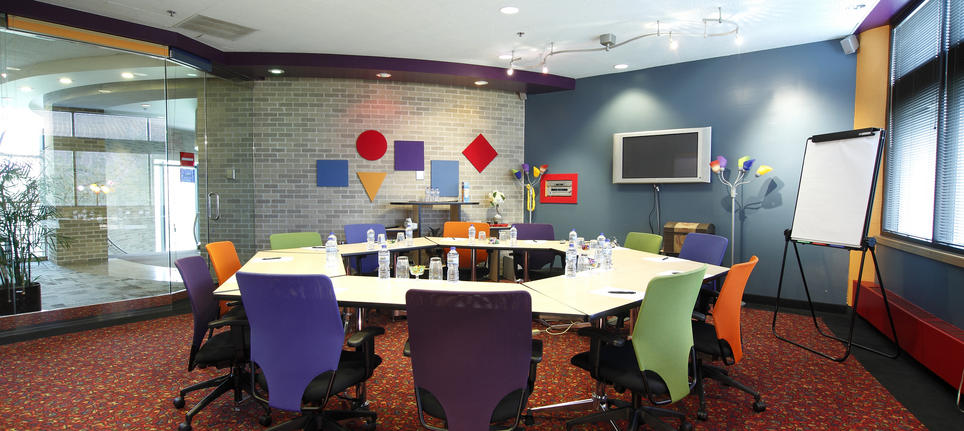The first four steps of how to prepare for a meeting are:
1. Set a clear and achievable goal for the meeting that is in line with the organization’s vision and mission [How to Prepare for a Meeting: Steps #1 & 2]
2. Choose the appropriate type of meeting: decision-making, informational, motivational, or creative [How to Prepare for a Meeting: Steps #1 & 2]
3. Select the right participants (without offending anyone) [How to Prepare for a Meeting: Step #3]
4. Schedule and structure the meeting to maximize the average attention span [How to Prepare for a Meeting: Step #4]
Now let’s discuss how to choose and equip the meeting space.
Step #5: Choose the right meeting space
Don’t just book the first room that comes to mind or the one you’ve used the most in the past. Choose the room that best fits the meeting’s type and needs. There are more meeting space set-ups than you may realize. Round tables work best for most types of meetings unless you are purposefully creating unequal power dynamics. For presentations to larger groups, a U-shaped table can be useful. The classroom format discourages conversation and interaction (and encourages daydreaming), so avoid it if possible. Whatever you choose, be sure to make and confirm the choice prior to sending out the agenda, in order to avoid duplicating communications.
Step #6: Prepare and test the technology
Technology helps engage and inform participants, provided presenters know how and when to use it. Ask presenters exactly what they’ll need and plan on bringing. If you anticipate using a lot of laptops or notebooks, set up extensions to meet the energy needs of the room. If there is a conference call, ensure you have a phone in the room with a speaker and that you know how to dial to an outside line. If you will need smart boards, white boards, or flip charts, make sure they’re available and that you have the appropriate markers. Pre-print table tents or other handouts. Don’t forget clickers from Turning Technologies, post-it notes, sharpies, and signs if you’re planning on using them. Before the meeting begins, be sure to test the technology.
Step #7: Provide yummies
The brain performs best with two additives: oxygen and sugar. According to the American College of Neuropsychopharmacology, “Although the brain represents only 2% of the body weight, it receives 15% of the cardiac output, 20% of total body oxygen consumption, and 25% of total body glucose utilization.” It is not surprising that many meetings offer sugary snacks. As you start to put stress on your brain, it begins to consume your sugar supply and craves more sugar to increase performance. So go ahead and provide M&Ms, cookies, and/or soda. Too much of this stuff can lead to obesity and diabetes, so don’t go nuts, or perhaps that is exactly what you should do–go with cashew nuts! Handheld oxygen is another viable option; it has no calories, of course, and can give participants a boost during long or especially important meetings.
In the next post in this series, we’ll discuss filling meeting roles as well as the most effective ways to create and send the agenda.
Related Posts
How to Prepare for a Meeting: Steps #1 & 2
How to Prepare for a Meeting: Step #3
How to Prepare for a Meeting: Step #4
How to Prepare for a Meeting: Steps #5-7




